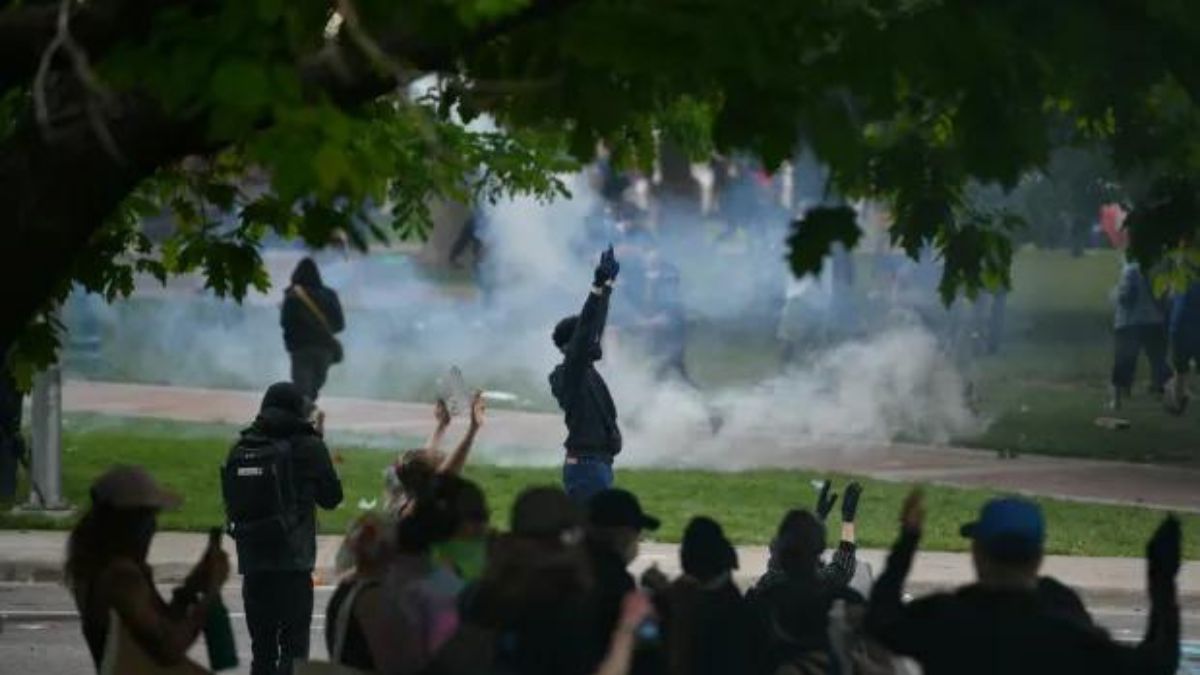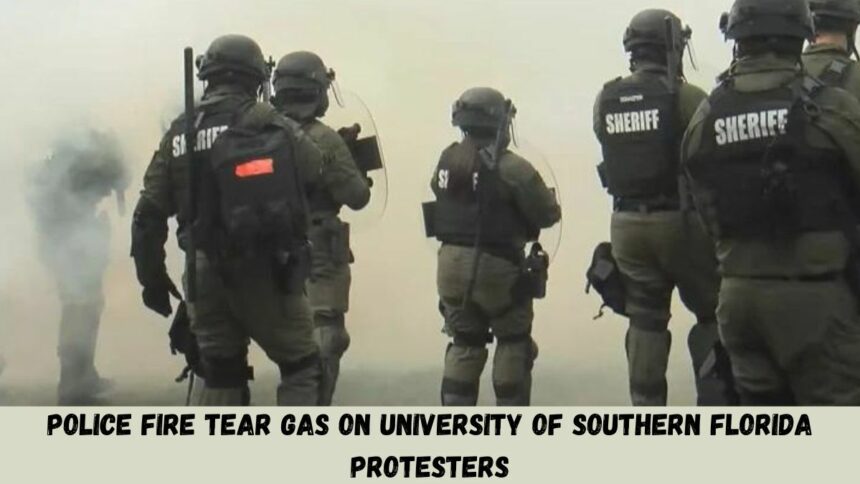At the University of Southern Florida, things got really hectic. People were protesting peacefully, but then the police showed up and started using tear gas to break up the crowd. It got pretty chaotic, and everyone was confused and upset. This clash between the police and the protesters has made a lot of people think about what’s going on in our society and how we deal with problems like this.
Police Fire Tear Gas On University Of Southern Florida Protesters
On Wednesday, April 30, students and members of the community at the University of South Florida came together for their second day of setting up a solidarity encampment for Gaza at the Martin Luther King Plaza. These weren’t just ordinary individuals; they were students with dreams and community members with families, all deeply concerned about what was happening in Gaza.
https://twitter.com/MEGTZ1/status/1785710401662922988
They weren’t just making demands; they were standing up for what they believed in. They wanted the university to be transparent about where it invests its money and to stop supporting companies that contribute to the conflict in Israel and Gaza. They wanted to raise awareness about the suffering in Gaza and show support for Palestinian students.
And they were also advocating for their fellow protesters who had been arrested the day before. At 2 p.m., they gathered for a rally, not just to make noise, but to call for justice and to remember the Nakba, a day of great significance for Palestinians.
Students set up two tents on the first day of the protest before police stormed them and made them leave. In a statement from Tampa Bay Students for a Democratic Society, the USF Police Department declared a 5 p.m. curfew at 4:30 p.m. as “arbitrary.”

The protesters were surrounded by police who had already arrived on the spot. After that, they brutalized the protesters, forcing them to lie facedown on the ground and putting a knee on both their backs and necks.
Members of Tampa Bay SDS received an email later that evening from USF informing them that if they continued the protest, they would be deemed to be trespassing. Students persisted and carried out the event in spite of these threats.
Starting early on the second day, students set up a camp at MLK Plaza. At 2:00 pm, the crowd grew for a rally demanding the dismissal of all charges against Simon Rowe and the other detained individuals.
The students then joined forces to create a human barrier around a group of students who had started erecting tents as a show of support for the people of Gaza. Thirty minutes later, the human chain had grown from thirty students to over eighty, chanting loudly and defending the tents from the police.
In a few hours, around a hundred riot cops with gas masks and shields arrived on the scene. More than fifty officers from various agencies joined them. Federal agents, sheriff’s office police, state troopers, campus police, and more were there.
In anticipation of rubber bullets and tear gas, community residents gathered around the student human chain, bringing umbrellas and handmade wooden shields.
The university and police issued a final warning to disperse at 5 p.m. The gathering was informed by student organizers that they were free to go and that if they wished to stay, they should be ready for arrest. Students remained in the human chain to guard six tents while the other protestors remained clustered around them in a show of support, even though they knew the police would strike.
Around five o’clock in the evening, the riot police attacked the protesters, fired rubber bullets into the crowd, doused the area with tear gas, and lit flares. They rode their bicycles over people. A Jewish demonstrator had his yarmulke pulled off.
Tear gas filled the lawn as administrators’ voices boomed overhead, announcing that the police would use “force that could result in injury” and that they would employ “chemical munitions”.
The MLK Plaza then caught fire as a result of the police firing tear gas canisters. Including a journalist and photographer, ten people were taken into custody. However, one presenter required medical attention.
“Police used illegal tactics like choking people, attacking people with disabilities, arresting people who were already dispersing, and they even set fires, endangering students,” claims SDS member Joseph Charry.
Students and community people persisted with their actions in spite of the police intimidation. Supporting words and donations to cover the cost of bail poured in. To demand the release of all protestors, people stayed at Orient Road Jail till late at night.
Protests and an ongoing effort to construct a solidarity encampment for the very next day were called for by organizers. All 10 of the protesters were freed by the following afternoon.
Take your time to look through the extra posts mentioned below:




